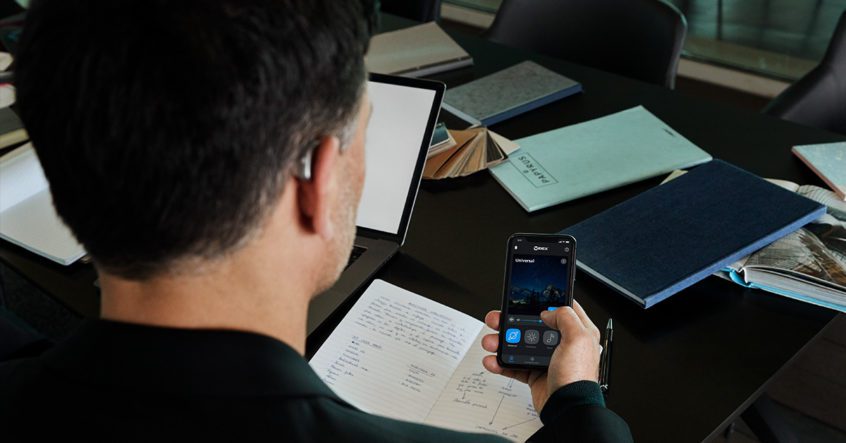Thinking about new hearing aids? There are lots of things to consider as you begin your search. Thanks to new technology, here are three important features you should consider in any new hearing aids you are looking at.
- Bluetooth connectivity—Bluetooth is the technology used to send signals between electronic devices. Its original purpose was to help us get rid of all the cables connected from our computer to our keyboard, mouse and monitor.
Today, many devices are Bluetooth-enabled. When your hearing aids are Bluetooth-compatible, it allows you to connect with specific Bluetooth-enabled devices, such as your smartphone or iPad. In fact, Bluetooth technology has made it possible for your phone to ring and for you to hear directly through your hearing aid(s). This allows for convenient hands-free communication, as well as hearing in both ears, which results in a much clearer signal than when using a phone on one ear.
Most hearing aid manufacturers now have hearing aids that utilize Bluetooth technology compatible with Apple and some with Android phones. More sophisticated hearing aids have a streamer built in, so no additional devices, streamers or wires are necessary in order to connect from your hearing aids to other devices, like your phone. You just have to pair the devices, as long as they are compatible.
- Digital Adaptive Directional Microphones—Newer digital hearing aids typically include two microphones, helping detect which direction a sound is coming from. Adaptive directional microphones are designed to prioritize speech coming from in front when other sound may interfere. This may help you hear speech better in a complex listening situation. Advanced hearing aids are actually equipped with adaptive microphones that follow the source of the sound, allowing you to keep track of conversations even as someone’s voice moves, and resulting in a more natural listening experience.
- Rechargeable Batteries—Whether you’re interested in rechargeable hearing aids because you have difficulty handling traditional hearing aid batteries, or you want a “greener” power option, most of the major hearing aid manufacturers now offer rechargeable hearing aid options.
In general, rechargeables, offer technological advances beyond the battery, including improved signal processing and more automatic adjustments. These help you hear better and more comfortably in complex listening situations, like in the car, social settings, talking on the phone or watching TV. Most of this advanced technology is available in non-rechargeable options as well.
Rechargeables also can be more convenient for patients who struggle with vision and/or dexterity when replacing tiny traditional hearing aid batteries.
Most rechargeables either use integrated lithium-ion batteries or field-changeable silver zinc batteries. These batteries can hold a charge for around 24 hours of use. Batteries require re-charging every night by placing them in a charging station. If you stream a lot of audio, the batteries may not last a full 24-hour day.
Your initial investment when choosing rechargeable will include the charger and the cost of the first rechargeable battery or batteries. The rechargeable battery life will depend on the type of rechargeable battery your hearing aids use.
The annual/routine cost of replacement rechargeable batteries is currently about the same as disposable batteries. In some cases, manufacturers will charge a regular out-of-warranty repair cost any time the rechargeable battery needs replacement, which may vary from $250-350 per repaired device.
Traditional hearing aid batteries still may be the best option to power your hearing aids, depending on your needs. They are easy to use, reliable, and over time, cost effective. Talk with an audiologist about the pros/cons of the different power options available so you can understand what’s best for you and your unique situation.
To learn more about the latest hearing aid technology and the many other options available, talk to a doctoral-level audiologist. Schedule an appointment.



